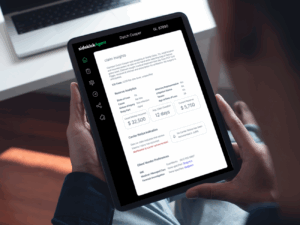March 14, 2020
UPDATE ALERT: Wednesday, March 18 at 7:30 p.m. CST.
Today, the Senate passed HR 6201 as approved by the House yesterday. President Trump signed into law at 8:30pm eastern. The bill will become law within 15 days. Within that time, rules will be developed and published by the Department of Labor.
The key provisions of the bill, as indicated below, remain intact.
Continue to watch for updates as rules or other details regarding the Emergency Family and Medical Leave Act and the Emergency Paid Sick Leave Act come to light.
UPDATE ALERT: Tuesday, March 17 at 8:30 a.m. CST.
Last night, the House made a number of “corrections” to the original legislation that modifies key aspects of the law. The bill is expected to be Senate for a vote as early as today.
The following are the key provisions of the “corrected” bill.
EMERGENCY FAMILY AND MEDICAL LEAVE ACT
Reasons for FMLA Leave: This “qualifying need due to public emergency” is limited now to instances where an employee is unable to work or telework due to the need to care for a child if the child’s school or place of child care has been closed or the child care provider is unavailable, due to a public health emergency. Employees remain entitled to up to 12-weeks of leave.
First 14 days of FMLA Leave: In the amended bill, the amount of unpaid leave is reduced to 10 days.
After the first 14 days: In a sharp departure from the original legislation, the remaining FMLA leave must be paid at two-thirds of the employee’s regular rate, for the number of hours the employee would otherwise be scheduled to work. Also, there are limits to the amount of required pay for leave – no more than $200 per day and $10,000 total.
EMERGENCY PAID SICK LEAVE ACT
Reasons for Sick Leave
Employers now would be required to provide paid sick leave to an employee who is unable to work or telework because:
- the employee is subject to a federal, state, or local quarantine or isolation order related to COVID-19;
- the employee has been advised by a health care provider to self-quarantine because of COVID-19;
- the employee is experiencing symptoms of COVID-19 and is seeking a medical diagnosis;
- the employee is caring for an individual subject or advised to quarantine or isolation;
- the employee is caring for a son or daughter whose school or place of care is closed, or child care provider is unavailable, due to COVID-19 precautions; or
- the employee is experiencing substantially similar conditions as specified by the Secretary of Health and Human Services, in consultation with the Secretaries of Labor and Treasury.
Health care providers and Emergency Responders: Allows an employer to deny health care providers and emergency responders sick leave, and direct the Department of Labor to issue regulations to exclude certain health care providers and emergency responders from the definition of employee
Continue to follow this blog for updates as the bill continues through the legislative process.
_________________________________________________________________________________
Late last night, the House passed the Families First Coronavirus Response Act. This bill was originally introduced on March 6, and I have been following it closely.
Since its introduction, there have been several modifications to key components including changes made last night. However, the latest news and social media chatter often is referencing prior versions of this bill, not the version introduced at 11:45 pm eastern yesterday and passed shortly thereafter.
As a result, there is misinformation spreading. To that end, the information below is reflective of the current version.
Note this is not the final step before the bill becomes law as the Senate will review and vote on it as early as Monday. The Senate is likely to make modifications and should that occur, I will provide an update as it passes. The President has indicated he will then sign the bill and it will take effect 15 days after his signature.
Key features of the current bill, as taken from a summary provided by the House:
Emergency Family and Medical Leave Expansion Act
Provides employees of employers with fewer than 500 employees and government employers, who have been on the job for at least 30 days, with the right take up to 12 weeks of job-protected leave under the Family and Medical Leave Act to be used for any of the following reasons:
- To adhere to a requirement or recommendation to quarantine due to exposure to or symptoms of coronavirus.
- To care for an at-risk family member who is adhering to a requirement or recommendation to quarantine due to exposure to or symptoms of coronavirus.
- To care for a child of an employee if the child’s school or place of care has been closed, or the child-care provider is unavailable, due to coronavirus.
- After the two weeks of paid leave (provided under the Emergency Paid Sick Leave Act), employees will receive a benefit from their employers that will be no less than two-thirds of the employee’s usual pay.
Emergency Paid Sick Leave Act
Requires employers with fewer than 500 employees and government employers to provide employees two weeks of paid sick leave, paid at the employee’s regular rate, to quarantine or seek a diagnosis or preventive care for coronavirus; or paid at two-thirds the employee’s regular rate to care for a family member for such purposes or to care for a child whose school has closed, or child care provider is unavailable, due to coronavirus.
- Full-time employees are entitled to two weeks (80 hours) and part-time employees are entitled to the typical number of hours that they work in a typical two-week period.
- The bill ensures employees who work under a multiemployer collective agreement and whose employers pay into a multiemployer plan are provided with leave.
- The Act, and the requirements under the Act, expire on December 31, 2020.
Events are changing rapidly, and the Sedgwick team is here to help you stay up to date. Continue to follow the Sedgwick blog or our social sites to hear the latest. Feel free to leave your questions and comments here.



